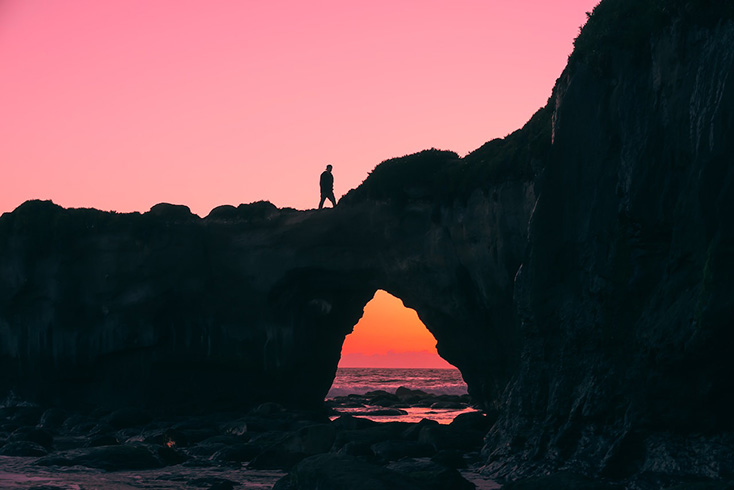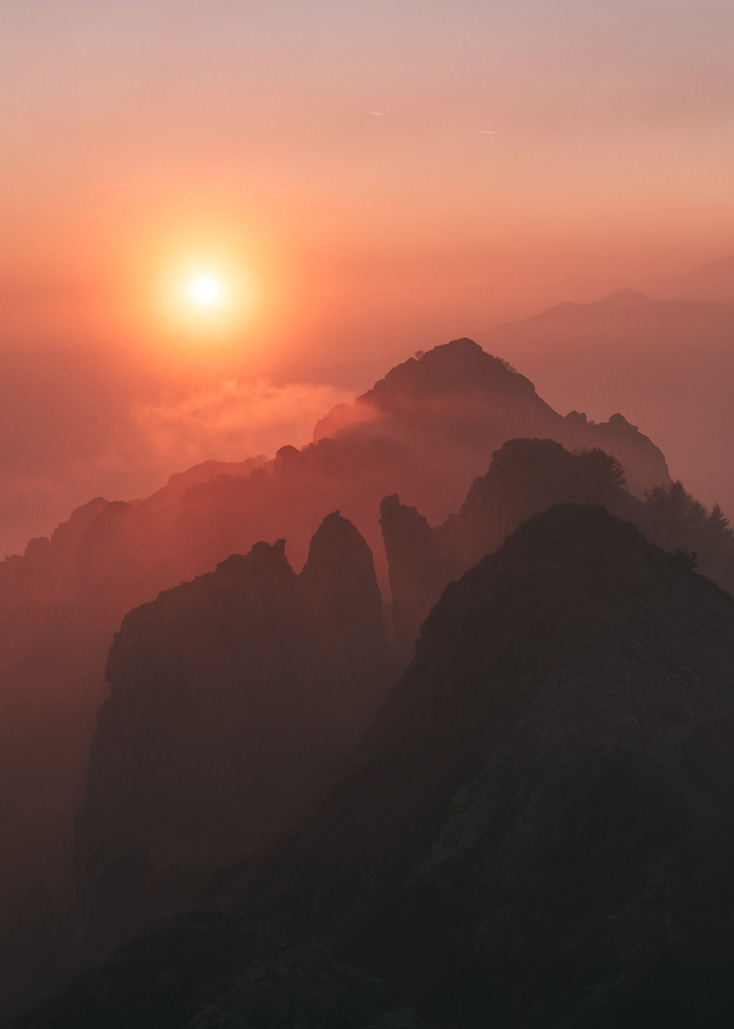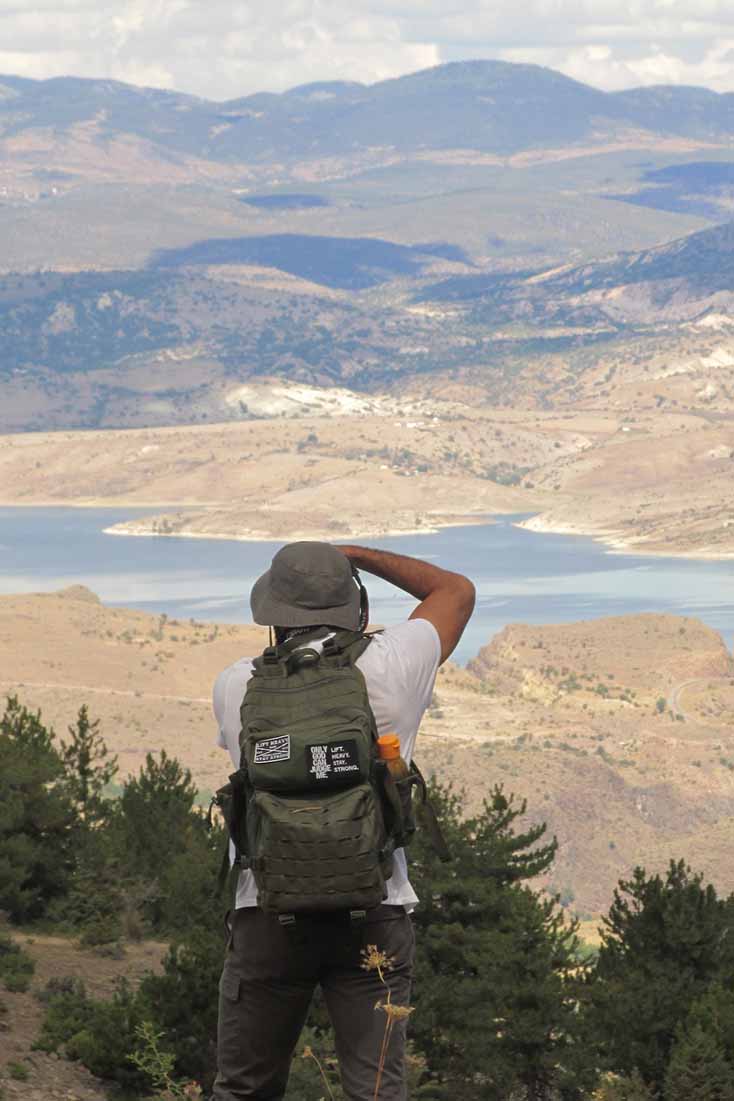Capturing the Beauty of the Natural World Through Your Lens
Explore the World and Capture Stunning Landscape Images
Tips, Tricks, and Techniques for Mastering Landscape Photography
Introduction
Landscape photography is a beautiful and rewarding genre of photography that allows us to capture and preserve the beauty of the natural world. It can also be challenging, as it requires a good understanding of camera settings, lighting, composition, and post-processing techniques. In this article, we will explore the essential tips and tricks for mastering landscape photography, including gear and equipment, composition, lighting, exposure and settings, post-processing, planning and preparation, and creative techniques.
Gear and Equipment
The first step to mastering landscape photography is to have the right gear and equipment. While having the latest and greatest gear is not always necessary, having a good camera, lens, tripod, and accessories can make a big difference in the quality of your images.
Camera Selection
When it comes to camera selection, there are many options to choose from, including DSLR, mirrorless, and point-and-shoot cameras. While each has its pros and cons, DSLR and mirrorless cameras are the most popular choices for landscape photography due to their versatility and image quality. When choosing a camera, consider the sensor size, resolution, dynamic range, and ISO performance.
Lens Selection
Lens selection is just as important as camera selection, as the lens determines the focal length and aperture of your images. A wide-angle lens is ideal for landscape photography, as it allows you to capture a wider field of view and emphasize the foreground. A good rule of thumb is to choose a lens with a focal length of 16mm to 35mm. Additionally, a fast aperture of f/2.8 or wider can help you capture sharp and detailed images in low-light conditions.
Tripod and Accessories
A sturdy tripod is an essential piece of equipment for landscape photography, as it allows you to keep your camera stable and avoid camera shake. Look for a tripod that is lightweight, durable, and easy to set up. Additionally, consider investing in accessories such as a remote shutter release, cable release, and lens filters to further enhance your images.
Filters
Lens filters can also play a critical role in landscape photography, as they allow you to control the amount of light entering the camera and capture more accurate colors. The most commonly used filters in landscape photography are polarizing filters, neutral density (ND) filters, and graduated ND filters.

Composition
Composition is the art of arranging the elements in your frame to create a visually appealing image. In landscape photography, composition can make or break your images, as it determines how the viewer will perceive the scene. Here are some essential composition techniques to keep in mind when shooting landscapes:
Rule of Thirds
The rule of thirds is a fundamental composition principle that divides your frame into thirds, both horizontally and vertically, creating nine equal sections. The rule of thirds suggests placing your subject or point of interest on the intersections or along the lines, rather than in the center of the frame.
Leading Lines
Leading lines are lines or shapes that guide the viewer's eye towards the main subject in the image. Examples of leading lines in landscape photography include roads, rivers, fences, and tree branches.
Framing
Framing involves using natural elements such as trees, rocks, or arches to frame your subject and create a sense of depth and dimensionality in your images.
Foreground Interest
Foreground interest refers to incorporating a visually interesting element in the foreground of your image, which can help create a sense of scale and depth in your images.
Symmetry and Patterns
Symmetry and patterns can add a sense of balance and harmony to your images. Look for natural elements such as reflections, waves in water, or repeating shapes in the landscape to create visually striking compositions.

Lighting
Lighting is another critical element in landscape photography, as it can greatly impact the mood and atmosphere of your images. Understanding different lighting conditions and how to use them to your advantage can help you capture stunning landscape images.
Golden Hour
The golden hour is the period of time just after sunrise or just before sunset when the light is soft and warm, creating a golden hue. This is often considered the best time to shoot landscapes, as the soft light can create a sense of warmth and depth in your images.
Blue Hour
The blue hour is the period of time just before sunrise or just after sunset when the light is cooler and bluer in tone. This can create a dramatic and moody atmosphere in your images, especially when paired with reflections in water or urban landscapes.
Cloudy and Overcast Days
While sunny days can create harsh shadows and blown-out highlights, cloudy and overcast days can create a soft and diffused light that is ideal for capturing the details and textures in the landscape. Additionally, overcast skies can create a sense of drama and mood in your images.
Using Natural Light to Your Advantage
Understanding how to use natural light to your advantage can greatly enhance your landscape images. Look for areas of contrast and shadows, which can add depth and dimensionality to your images. Additionally, use the direction of light to create interesting textures and patterns in the landscape.
Use of Artificial Light
While natural light is often preferred in landscape photography, the use of artificial light sources such as flash, light painting, or ambient light can create a sense of drama and creativity in your images. Experiment with different light sources to see how they can add a new dimension to your landscape photography.
Exposure and Settings
Understanding exposure and camera settings is essential in landscape photography, as it can greatly impact the quality of your images. Here are some essential exposure and camera settings to consider when shooting landscapes:
Aperture
Aperture refers to the opening of the lens, which controls the amount of light entering the camera. In landscape photography, a small aperture (such as f/8 to f/16) is often preferred, as it can help capture more detail and depth in the image.
Shutter Speed
Shutter speed refers to the length of time the camera's shutter is open, which controls the amount of light entering the camera. In landscape photography, a slow shutter speed can create a sense of movement and blur in the image, such as in waterfalls or moving clouds.
ISO
ISO refers to the camera's sensitivity to light, with higher ISO values resulting in more noise or grain in the image. In landscape photography, it is often preferred to use a lower ISO value to maintain the quality and detail in the image.
Exposure Compensation
Exposure compensation refers to the adjustment of the camera's exposure settings to compensate for bright or dark scenes. Use exposure compensation to adjust the exposure and ensure that the highlights and shadows are properly exposed.
Focus Stacking
Focus stacking involves taking multiple images at different focus points and combining them in post-processing to create a sharp and detailed image from front to back. This technique is especially useful in landscape photography, where a wide depth of field is often desired.
Post-Processing
Post-processing is the process of editing and enhancing your images after they have been taken. While post-processing can't fix a poorly composed or exposed image, it can help enhance the colors, contrast, and details in the image. Here are some essential post-processing techniques for landscape photography:
RAW Image Processing
RAW image processing involves converting the RAW files from your camera to a more editable file format such as JPEG or TIFF. This allows you to adjust the exposure, white balance, and other settings without compromising the quality of the image.
Color Correction and White Balance
Color correction and white balance refer to the adjustment of the colors and temperature of the image to ensure that they accurately reflect the scene. This is especially important in landscape photography, where accurate colors can greatly enhance the mood and atmosphere of the image.
Adjusting Contrast and Exposure
Adjusting the contrast and exposure of the image can help enhance the details and textures in the landscape. Use tools such as curves, levels, and exposure adjustment to adjust the contrast and exposure to your liking.
Sharpening and Noise Reduction
Sharpening and noise reduction can greatly enhance the clarity and quality of your images. Use tools such as the sharpening filter and noise reduction filter to adjust the sharpness and reduce noise in your images.
Using Specialized Software for Landscape Photography
There are many specialized software programs available for landscape photography, such as Adobe Lightroom and Photoshop, which can greatly enhance your post-processing workflow. These programs allow you to edit and enhance your images with advanced tools such as selective adjustment, gradient filters, and cloning tools.

Planning and Preparation
Planning and preparation are essential in landscape photography, as they can greatly increase your chances of capturing stunning images. Here are some essential tips for planning and preparing for your landscape photography shoots:
Researching Locations
Researching locations ahead of time can help you identify potential shots and plan your shoot accordingly. Use resources such as guidebooks, online forums, and social media to gather information and inspiration for your shoot.
Timing Your Shoot
Timing your shoot is essential in landscape photography, as different times of day can greatly impact the lighting and atmosphere of your images. Plan your shoot around the golden hour or blue hour, and be prepared to shoot during different weather conditions for unique and interesting images.
Checking Weather Conditions
Checking weather conditions ahead of time can help you prepare for any potential challenges or opportunities in your shoot. Be prepared for changing weather conditions, and bring appropriate gear and clothing to protect yourself and your equipment.
Pre-Visualizing Your Shot
Pre-visualizing your shot involves visualizing the image in your mind before taking the shot. This can help you identify potential compositions and anticipate any challenges or opportunities in your shoot.
Being Patient and Adaptable
Landscape photography requires patience and adaptability, as the conditions and lighting can change quickly. Be prepared to wait for the right moment and be open to adjusting your plans as necessary to capture the best shot.
Tips and Tricks
Here are some additional tips and tricks for capturing stunning landscape images:
Using the Panorama Technique
The panorama technique involves taking multiple images and stitching them together in post-processing to create a wider image. This technique is especially useful for capturing expansive landscapes or scenes with a wide field of view.
Capturing HDR Images
HDR (High Dynamic Range) images involve taking multiple images at different exposures and combining them in post-processing to create a well-exposed image with a wide range of tones. This technique is especially useful in challenging lighting conditions where the dynamic range is high.
Creating Long-Exposure Shots
Creating long-exposure shots involves using a slow shutter speed to create a sense of movement or blur in the image. This technique is especially useful for capturing waterfalls, waves, or other moving elements in the landscape.
Using ND Filters for Dramatic Effects
ND (Neutral Density) filters are used to reduce the amount of light entering the camera, allowing for longer exposures and more creative effects. Experiment with different ND filters to create unique and dramatic effects in your landscape images.
Experimenting with Creative Techniques
Landscape photography is an art form that allows for endless experimentation and creativity. Don't be afraid to try new techniques, experiment with different settings and gear, and push the boundaries of your creativity to capture unique and stunning images.
Conclusion
In conclusion, landscape photography is a challenging but rewarding art form that requires a combination of technical knowledge and artistic vision. By mastering the gear and equipment, composition, lighting, exposure and settings, post-processing, planning and preparation, and by experimenting with creative techniques, you can capture stunning landscape images that evoke a sense of wonder and awe in the viewer.
Remember to always be patient and adaptable, and to take the time to pre-visualize your shots and plan your shoots accordingly. With practice, patience, and creativity, you can master landscape photography and capture images that inspire and amaze. So get out there, explore the world around you, and capture the beauty of the natural world through your lens.

Moraine Lake
Foto av Jaime Reimer från Pexels
Landscape photography is the supreme test of the photographer - and often the supreme disappointment.
Faq
- Q: What gear do I need for landscape photography?
A: You will need a camera, lens, tripod, filters, and other accessories. Check out our Gear and Equipment section for more details. - Q: What is the best time of day to shoot landscape photos?
A: The Golden Hour and Blue Hour are ideal times for landscape photography, but don't be afraid to experiment with other lighting conditions as well. - Q: Do I need to shoot in RAW format for landscape photography?
A: Shooting in RAW format gives you more flexibility in post-processing, but it's not absolutely necessary. Use what works best for you. - Q: How can I make my landscape photos stand out?
A: Experiment with creative techniques like long-exposure shots, HDR images, and using filters to create unique and stunning images. - Q: How important is planning and preparation in landscape photography?
A: Planning and preparation are crucial for successful landscape photography. Researching locations, timing your shoot, and checking weather conditions can make all the difference.
Pros and Cons
Pros:
- Landscape photography allows you to capture the beauty of the natural world in a unique and artistic way.
- With the right skills and equipment, you can create stunning images that inspire and amaze.
- Landscape photography is a great way to explore the world around you and connect with nature.
Cons:
- Landscape photography can be challenging and requires a lot of patience and persistence.
- The weather and lighting conditions can be unpredictable and may require you to adjust your plans.
- High-quality gear and equipment can be expensive and may be out of reach for some photographers.
Resources
- Understanding Exposure, Fourth Edition: How to Shoot Great Photographs with Any Camera by Bryan Peterson (Author)
Description: Bryan Peterson's revised "Understanding Exposure" demystifies complex exposure concepts in photography, explaining fundamentals of light, aperture, and shutter speed. It includes tips on sharpness, contrast, flash, colored gels, and shooting star trails. - The Photographer's Eye: Composition and Design for Better Digital Photos by Michael Freeman (Author)
Description: "The Photographer's Eye" emphasizes design as a crucial factor in creating successful photos. It discusses traditional composition techniques and the unique opportunities offered by digital photography and post-processing. This globally-recognized book offers clear examples, schematic illustrations, and guidance on exploring locations for best photographic possibilities. - Photography: The Definitive Visual History (DK Definitive Cultural Histories) by Tom Ang (Author), TOM ANG PARTNERSHIP (Author)
Description: "Photography: The Definitive Visual Guide" by Tom Ang traces the evolution of photography, including iconic photographs, biographies of famous photographers, and innovative cameras. The book also highlights photography's influence on social and cultural change. - Adobe Photoshop and Lightroom Classic Classroom in a Book by Rafael Concepcion (Author)
Description: "Adobe Photoshop and Lightroom Classic for Photographers Classroom in a Book" offers comprehensive, hands-on training for Adobe's photo-editing software. Covering basics and advanced features, it guides users in improving image quality, leveraging AI tools, and streamlining their workflow. - Humans of New York by Brandon Stanton (Author)
Description: "Humans of New York," based on the widely followed blog, is a New York Times bestseller featuring heartfelt stories and photographs capturing the spirit of New York City. This hardbound edition celebrates individuality and pays tribute to the city's diverse personalities.

